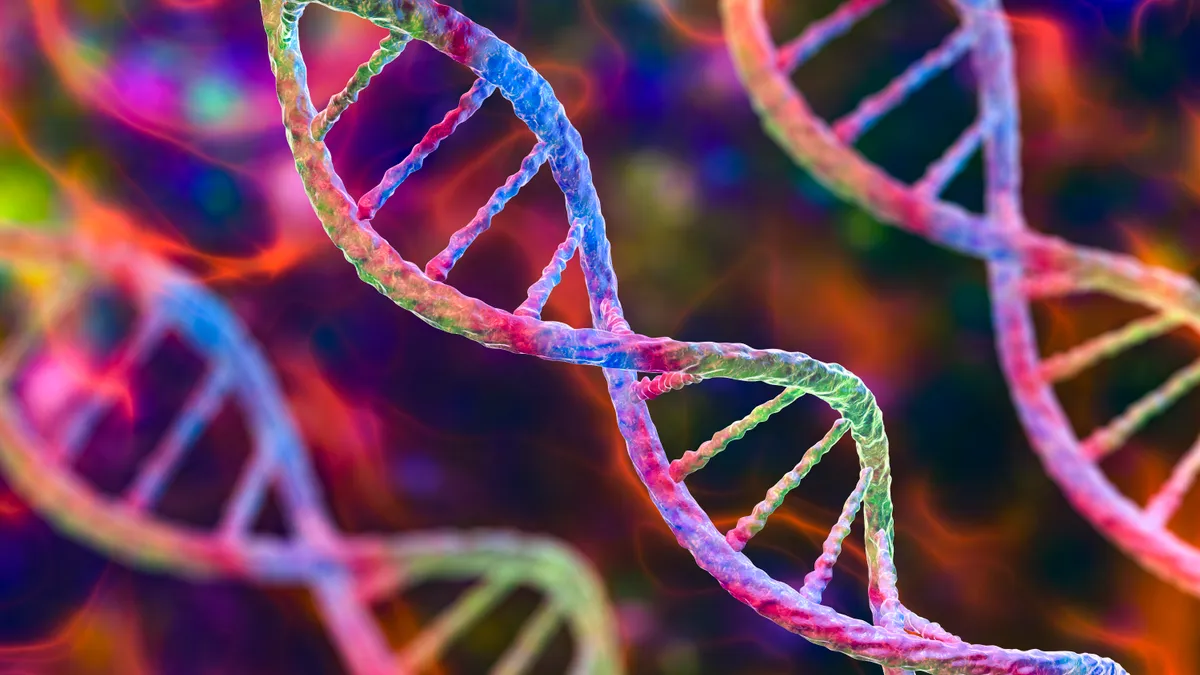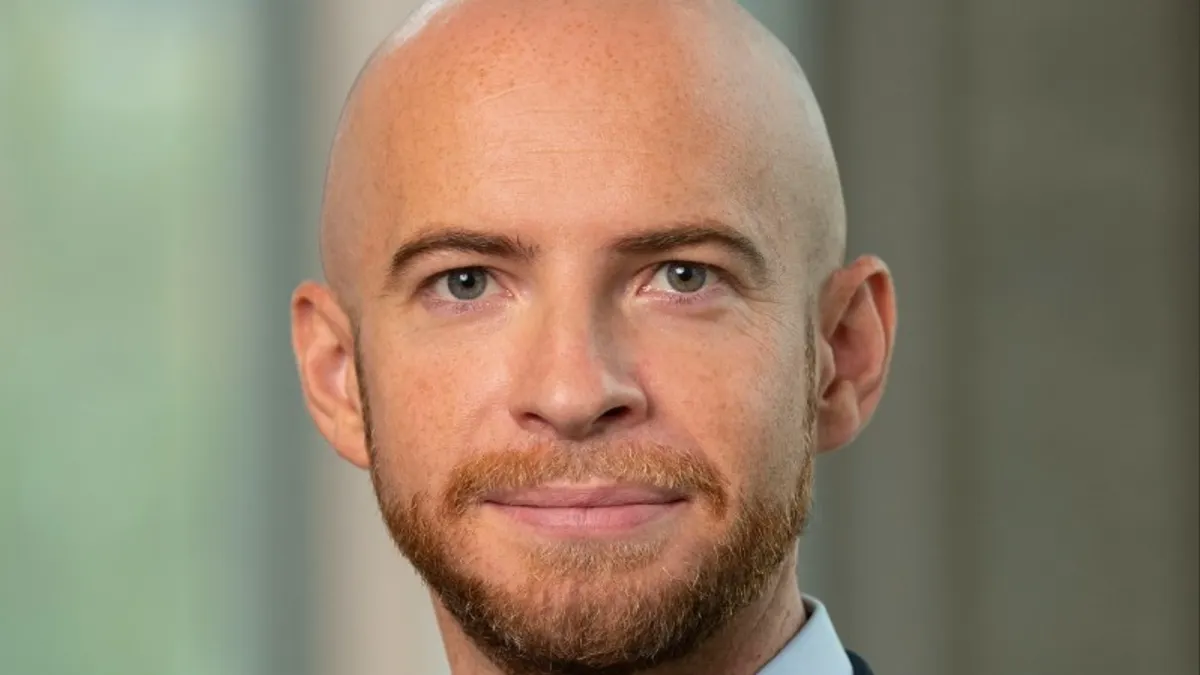A treatment to restore eyesight and hearing. New hope for a devastating form of brain cancer. Cell therapies for gut diseases that affect digestion. These are just a few of the cell and gene therapy technologies that are poised to significantly improve healthcare for patients over the next decade — some of them close at hand.
Each of these innovations was recently highlighted by Mass General Brigham, a Massachusetts-based academic healthcare system and biomedical research organization, in its annual “Disruptive Dozen” list, chosen by a group of Harvard Medical School faculty members. The list showcases a small number of ongoing research projects and illustrates just how far the cell and gene therapy field has evolved from formative concepts developed as far back as the 1960s.
The first person successfully treated with gene therapy was a 4-year-old patient suffering from a rare immune system disorder in 1990. But the FDA didn’t officially approve the first gene therapy treatment, for a type of acute lymphoblastic leukemia (ALL), until 2017.
Since then, the cell and gene therapy market has seen a huge infusion of cash aimed at advancing the field. In 2019, nearly $20 billion was poured into the cell and gene therapy space, breaking the previous record of $13.5 billion set the year prior. Today, cell and gene therapy initiatives are making progress toward treating conditions such as Parkinson’s disease, sickle cell disease and even Type 1 diabetes.
But while there has been substantial investment and nearly two dozen cellular or gene therapy treatments have made it to market, the field has also had its share of setbacks ranging from disappointing trial results to safety issues, including serious complications such as inflammation, infections and even the development of certain cancers following treatment.
Despite these hurdles, cell and gene therapy research is advancing so rapidly that many of the treatments in the works today seemed unfathomable a decade ago. Ten years from now, the story could be much the same.
“When you talk to the clinicians they say, ‘We’re going to look back on this period and recognize it for how primitive it was regarding these technologies,’” says Chris Coburn, chief innovation officer at Mass General Brigham (previously known as Partners HealthCare). In the very near future, he says, the whole model is going to be different.
Here, we’re looking at some of the potentially game-changing treatments being developed in the Mass General Brigham network, which includes a number of high-profile hospitals in the Boston area.
Seeing a cure for blindness
Many of the treatments being explored target once incurable conditions, such as blindness caused by genetic disorders. A method known as CRISPR-Cas9 gene editing, which made Mass General Brigham’s list this year, repairs faulty genes in the eye by inserting healthy replacements to treat conditions like Leber congenital amaurosis type 10, a currently untreatable and severe form of childhood blindness.
Researchers are also developing cell-based therapies designed to replace lost or injured cells to restore vision in people with damage to the retina or cornea.
A suite of complementary treatments may allow doctors to treat multiple problems in different parts of the eye at once, Patrick Fortune, vice president of strategic innovation leaders at Mass General Brigham, says.
A needed therapy booster for glioblastoma
Gene therapy advances are bringing doctors closer to helping patients with glioblastoma, the devastating brain cancer with a five-year survival rate of just 6.8%. To date, precision medicine approaches have targeted proteins, but new research is focusing on a previously overlooked actor — RNA.
This treatment approach at Mass General Brigham uses molecules called microRNAs, which join to form a single unit that can be inserted into the brain using a virus. This therapy may help enhance the effectiveness of chemotherapy and other existing treatments.
Another separate approach blocks the activity of a type of microRNA called miR-10b, which prompts tumor cells to die. There has been little change in how glioblastoma has been managed over the past 50 years, Coburn says.
“Anything that gets traction in glioblastoma is almost by itself a game changer,” he says. “The idea that more advanced ability to use RNA therapeutically is emerging, and then will be applied on diseases like brain cancers, is remarkable.”
A fix for the animal organ dilemma
New technology is also furthering the field of organ transplantation. Today, performing an organ transplant is a race against time often involving middle-of-the-night phone calls and rushed surgeries. But that frenetic process may one day become a thing of the past thanks to advances in gene editing technology helping to make xenotransplantation a reality, Coburn says.
The idea of growing a steady supply of animal organs for use in human transplants isn’t new. Scientists have been working on the technology for some 20 years. What has changed is the advance in gene editing, which gives scientists the ability to camouflage transplant organs from the human immune system, which is tasked with rejecting them.
"When you talk to the clinicians they say, ‘We’re going to look back on this period and recognize it for how primitive it was regarding these technologies.’”

Chris Coburn
Chief Innovation Officer, Mass General Brigham
Molecularly engineered animal organs may help save a substantial number of lives. More than 100,000 people in the U.S. are awaiting a life-saving organ transplant and 17 people die each day before an organ becomes available. Having a predictable organ supply would allow doctors and patients to plan ahead.
“You’d have a very measured approach to optimizing when that organ will be delivered, when the surgery is going to take place, what works best for the patient,” Coburn says. “The implications here are really profound.”
Mass General Brigham researchers are not the only ones focused on this approach. This year, doctors at the University of Maryland Medical Center successfully performed a human heart transplant using an engineered pig heart supplied by Virginia-based Revivicor, a subsidiary of United Therapeutics. The patient lived with the organ for two months, and while the transplant faced a critical setback, it still represented a major step forward.
Cell transplants, not just whole organs, may also soon become a reality, Fortune says.
“Another thing that's going to go through validation very quickly, and that's approaching the clinic now, are [transplants of] pancreatic islet cells for treating Type 1 diabetes,” he says.
Cell regeneration for hearing loss
Another treatment on the horizon could help millions of Americans with hearing loss. This technology would help regrow specialized cells inside the ear called hair cells.
Most people have 16,000 of these hair cells when they’re born, but the cells may be damaged over time by loud noises or diminish with age. The destruction of these hair cells leads to permanent hearing loss.
But now, researchers are developing a process that could restore these cells and hearing along with them.
The full list
All of the technologies highlighted on Mass General Brigham’s “Disruptive Dozen” list are in various stages of preclinical and clinical trials, and expected to emerge over the next 10 years.
“I think the way these are going to be developed is going to go a little bit faster than that. But the broadest indications will not come first,” Fortune says, noting that narrower indications, such as treating people with one unique genetic defect, will likely lead the pack.
Currently, the treatments are being developed without partners in pharma, according to Mass General Brigham’s communications team.
Here is a look at the other technologies on the Mass General Brigham’s Disruptive Dozen list:
- Treating diseases related to gut motility using cell replacement therapy.
- A new type of gene therapy for brain disorders that helps to overcome the challenges related to moving treatments past the blood-brain barrier.
- A novel antiviral therapy to target a range of viruses using CRISPR-Cas gene editing tools.
- Treatments for autoimmune disorders using CAR-T cells, a type of immune system cell. Scientists are working to use these cells to target rogue immune cells that attack the body’s own tissues in conditions like Lupus.
- New types of gene therapy delivery systems, including a skin patch and a biodegradable implantable device that releases a steady infusion of medication over time, to minimize side effects.
- Better options for solid tumor treatment, including the use of CAR-T cells, which are programmed to identify and target challenging types of tumors, or cancer cells that are modified to become cancer killers.
- A therapeutic strategy to treat X-chromosome defects, including neurodevelopmental disorders, such as Rhett syndrome.
And more advances are right behind this batch, Fortune says.
“What you're seeing is the tip of the iceberg of things that are coming to realization in a pharmaceutical sense in the relatively near term,” Fortune says. “But the excitement that's coming several steps back in the process is at least as encouraging as what we're seeing now. So, maybe another way to put it is you're going to see more of the same on an annual basis as these things just move through the pipeline. And the things that will be here in 10 or 15 years are things we couldn't have thought of today.


















